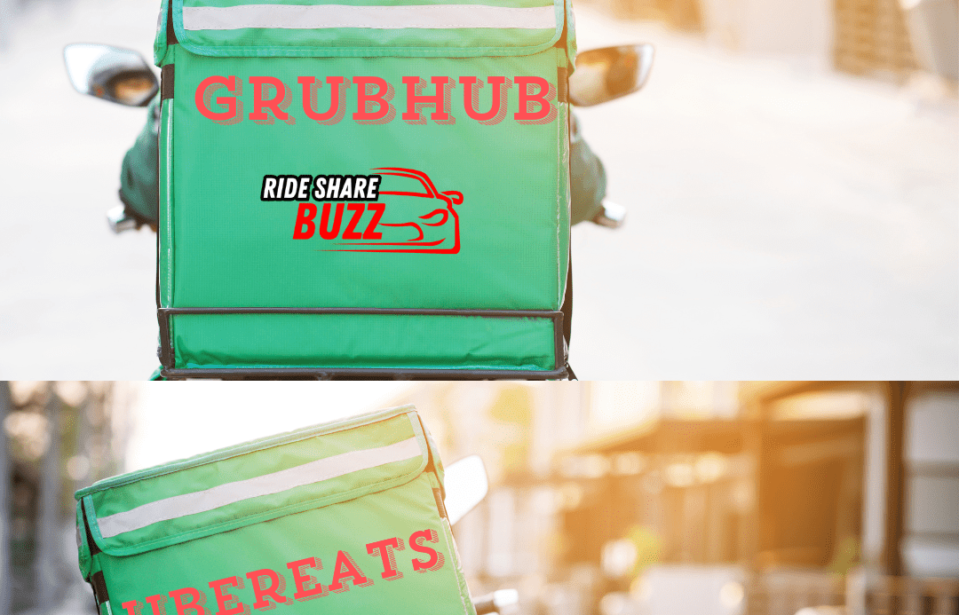The rise of food delivery apps like GrubHub vs. Uber Eats has revolutionized the way we order and receive our favorite meals. In this detailed comparison, we’ll delve into the specifics of GrubHub vs. Uber Eats, focusing on which platform is better for drivers. We’ll explore various aspects, including earnings, convenience, support, and more, to help drivers make an informed decision about which service to sign up for.
About the Companies:
GrubHub:
GrubHub is a leading online and mobile food-ordering platform that connects diners with local restaurants. Founded in 2004, GrubHub has established itself as a prominent player in the food delivery space, operating in over 4,000 U.S. cities. As of 2022, GrubHub merged with Just Eat Takeaway.com, further expanding its reach.
Uber Eats:
Uber Eats is a food delivery platform launched by ride-sharing giant Uber in 2014. Building on Uber’s expertise in logistics and real-time location services, Uber Eats quickly gained traction, now operating in thousands of cities worldwide.
Sign-Up Requirements:
To become a driver for either platform, you’ll typically need to meet the following requirements:
- Be at least 19 years old (GrubHub) or 18 years old (Uber Eats).
- Have a valid driver’s license and a clean driving record.
- Own a qualified vehicle, such as a car, bike, or scooter, or, in some cases, be willing to deliver on foot.
- Provide necessary documentation, such as vehicle registration and proof of insurance.
- Pass a background check.
Earnings and Tipping: Unlocking Financial Potential
GrubHub:
- Base Pay: GrubHub often guarantees a minimum amount per order, providing more consistent earnings.
- Tips: Drivers can see the exact tip amount before accepting an order, allowing for informed decisions.
- Delivery Fees: A portion of the delivery fee charged to customers goes to the driver, varying based on market conditions.
Uber Eats:
- Base Pay: Uber Eats’ base pay fluctuates based on factors like distance and time, offering dynamic earnings.
- Tips: The tip amount isn’t visible upfront, and drivers see an estimated total earnings before accepting an order.
- Delivery Fees: Uber Eats charges customers a delivery fee, a portion of which is paid to the driver, similar to GrubHub.
Convenience and Flexibility: Streamlining Your Driving Experience
GrubHub:
- Order Details: GrubHub shows the full order information, including the restaurant and items, before accepting.
- Scheduling: GrubHub allows drivers to schedule blocks in advance, ensuring preferred time slots.
- Pickup Process: Drivers usually need to place orders with restaurant staff, which can result in waiting times.
- Delivery Radius: GrubHub typically operates within a smaller delivery radius, leading to shorter distances.
Uber Eats:
- Order Details: Uber Eats does not reveal the full order details before accepting.
- Scheduling: Uber Eats does not offer advance scheduling, making preferred time slots more challenging to secure.
- Pickup Process: Uber Eats often provides priority pickup for drivers, reducing waiting times.
- Delivery Radius: Uber Eats offers a wider delivery radius, resulting in more varied destinations.
Driver Support and Resources: Your Ally on the Road
GrubHub:
- 24/7 Assistance: GrubHub provides around-the-clock phone and in-app support to drivers.
- Dispute Resolution: You can dispute issues like missing payments through their support channels.
- Payment Methods: GrubHub offers direct deposit, PayPal, and daily cash-out options for quick access to earnings.
Uber Eats:
- Around-the-Clock Help: Uber Eats also offers 24/7 phone and in-app support for drivers.
- Issue Reporting: You can report problems like incorrect delivery details or missing earnings through their support system.
- Payment Choices: Uber Eats provides multiple payment methods, including direct deposit and instant pay options for immediate earnings access.
Pros and Cons: Weighing the Benefits
GrubHub:
Pros:
- Consistent base pay and transparent tipping structure.
- Ability to see full order details and tip amount before accepting.
- Scheduling blocks in advance for preferred time slots.
- Various payment methods, including daily cash-out.
Cons:
- Waiting times at restaurants, especially during peak hours.
- Smaller delivery radius may result in a limited number of overall orders.
Uber Eats:
Pros:
- Dynamic base pay structure with potential for higher earnings during peak demand.
- Wider delivery radius, offering more variety in destinations.
- Priority pickup for drivers reduces waiting times.
Cons:
- Less transparency with tip amounts before accepting orders.
- Lack of advance scheduling makes securing preferred time slots more challenging.
Making the Right Choice for You
In the GrubHub vs. Uber Eats debate for drivers, both platforms offer unique advantages. GrubHub stands out for its transparency, consistent pay, and scheduling flexibility. On the other hand, Uber Eats appeals to drivers seeking dynamic earnings during busy periods and a more extensive delivery radius.
The decision between GrubHub and Uber Eats ultimately depends on your personal priorities. If consistent pay, transparent tipping, and the ability to schedule in advance are crucial to you, GrubHub might be the better fit. Conversely, if you’re enticed by the prospect of higher earnings during peak hours and value a wider range of delivery destinations, Uber Eats could be more suitable.
Remember, both platforms continuously evolve, so staying informed about the latest updates is essential. You can also try signing up for both and using each for a period to determine which aligns best with your driving preferences and financial goals. Happy driving and delivering!
Join our buzzing community of rideshare drivers where you can connect with your fellow drivers and discuss any questions or insights you may have about the rideshare world. Whether you’re a seasoned driver or just starting, our community is a space to share experiences, seek advice, and find support from those who understand the unique challenges and joys of being a rideshare driver.





Leave a comment